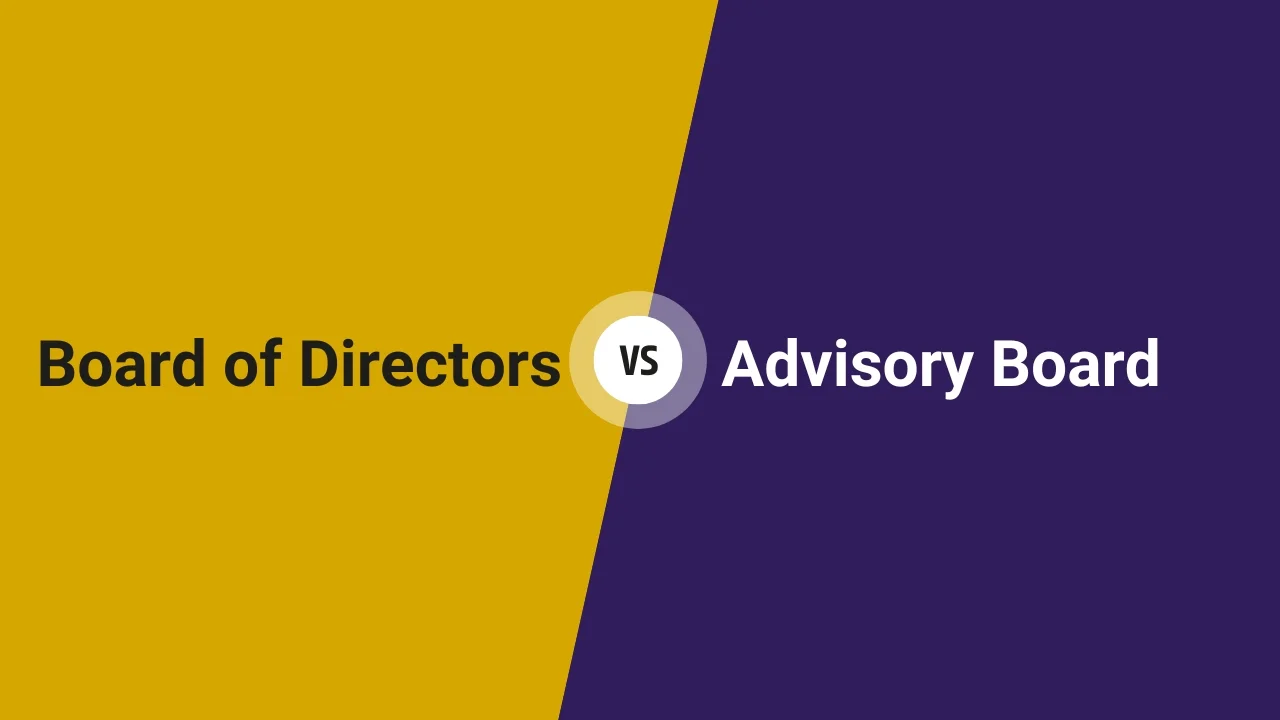
A board of directors and an advisory board are both groups of people who provide guidance and support to an organization. While both aim to guide an organization toward success, their functions, structures, and legal obligations set them apart.
This article delves into the key differences between these two entities, offering insights into their unique roles. Whether you’re an executive, an entrepreneur, or simply curious about governance, this exploration will provide the knowledge needed to navigate the world of leadership and advisory roles. Join us on this enlightening journey to understand the significance of these pivotal pillars in organizational oversight.
Board of Directors vs. Advisory Board: A Comparative Insight
A Board of Directors and an Advisory Board can have a profound impact on an organization’s success and direction. However, there are some key differences between the two:
Board Formation Cost
Forming and managing a board of directors is considerably more costly and administratively involved compared to an advisory board. Board members typically receive compensation for attending meetings and have their travel expenses reimbursed. For larger companies, meeting attendance fees can be substantial.
Advisory board members receive lower compensation, often forgoing meeting fees and travel reimbursements in exchange for a small equity stake in the company.
Legal Framework
The role of a board of directors is legally defined by laws or rules that outline the matters the board will be involved in, meeting frequency, and director election, removal, and compensation.
Advisory boards are less formal and can adapt more flexibly to the needs of the CEO and executive management. Members can be added or removed with ease based on the company’s requirements.
Liability and Insurance
The board carries a legal duty to the company, and without a Directors and Officers (D&O) insurance policy in place, board members can be personally liable, deterring potential candidates from joining.
Advisory board members, with few exceptions, are not held liable for mistakes made while advising the company, reducing the need for D&O liability insurance and making the role more attractive to potential members.
Advisory Roles
A popular misconception is that the board serves at the discretion of the CEO and works in the best interest of the company’s executives. The board represents the interests of the organization and shareholders and will consequently place those interests above that of management
Advisory board members are selected and replaced by the CEO and management team, with their primary focus being to advise and assist top executives. This reduced liability risk encourages advisory board members to provide more information.
Information Flow
A board of directors is likely to be more motivated – financially and legally-to help a company succeed, Also, since directors typically receive far more information from the company than advisory board members they are conceivably able to make better, more informed decisions.
Since the chances of being held liable for their advice are doubtful, advisory board members may give much more information than they would if they were on a board of directors, however, the free flow of information is a double-edged sword in that it may result in less forethought.
Authority and Decision-Making
While rare, a board of directors has the authority to remove the CEO, especially if board seats are allocated to investors.
Advisory boards lack decision-making authority and exist solely to provide advice and ideas. The final decisions rest with the management team.
Key Insights on Boards and Advisory Boards
A board of directors and an advisory board can both be valuable resources for an organization. The best choice for your organization will depend on your specific needs and goals. If you are unsure which type of board is right for you, it is a good idea to consult with an attorney or other experienced professional.







